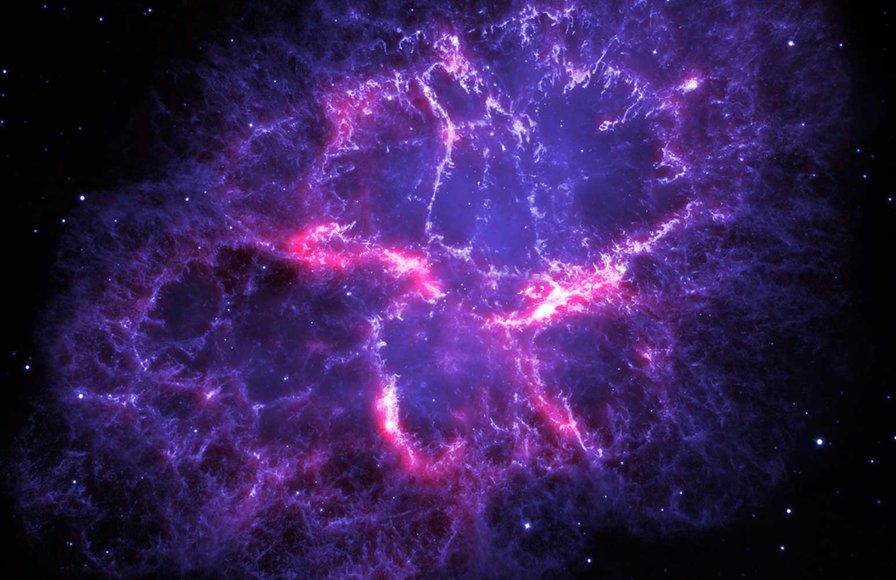
A composite view of the Crab nebula viewed by the Herschel Space Observatory and the Hubble Space Telescope (Image: NASA)
A team of scientists found first evidence for the existence of a Majorana fermion, a hypothetical particle proposed 80 years ago that is its own antiparticle.
In 1928, physicist Paul Dirac predicted that every fundamental particle has an antiparticle – a twin that has an opposite charge. If a particle and antiparticle were to meet, they would be annihilated while releasing a burst of energy. But in 1937, physicist Ettore Majorana added the prediction that a class of particles exists known as fermions, which would include particles that are their own antiparticles.
Now the researchers from Stanford University and University of California found the Majorana fermion in a series of lab experiments on exotic materials. They were led by UC-Irvine Associate Professor Jing Xia and UCLA Professor Kang Wang, and followed a plan proposed by the Stanford physics professor Shoucheng Zhang.
Professor Zhang, one of the senior authors of the paper, put their finding in perspective:
“Our team predicted exactly where to find the Majorana fermion and what to look for as its ‘smoking gun’ experimental signature,” said Zhang. “This discovery concludes one of the most intensive searches in fundamental physics, which spanned exactly 80 years.”
Want to learn more about antimatter? Let Michio Kaku explain:

The Search for Antimatter Michio Kaku
The post Scientists Discover The “Angel Particle” That Is Both Matter and Anti-Matter appeared first on FeedBox.